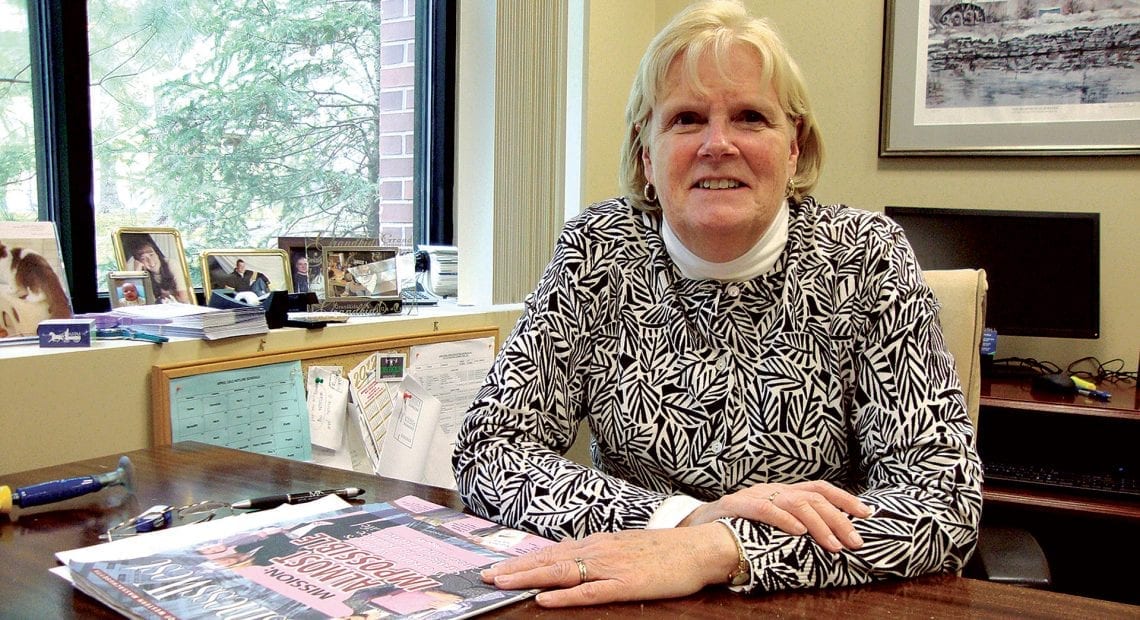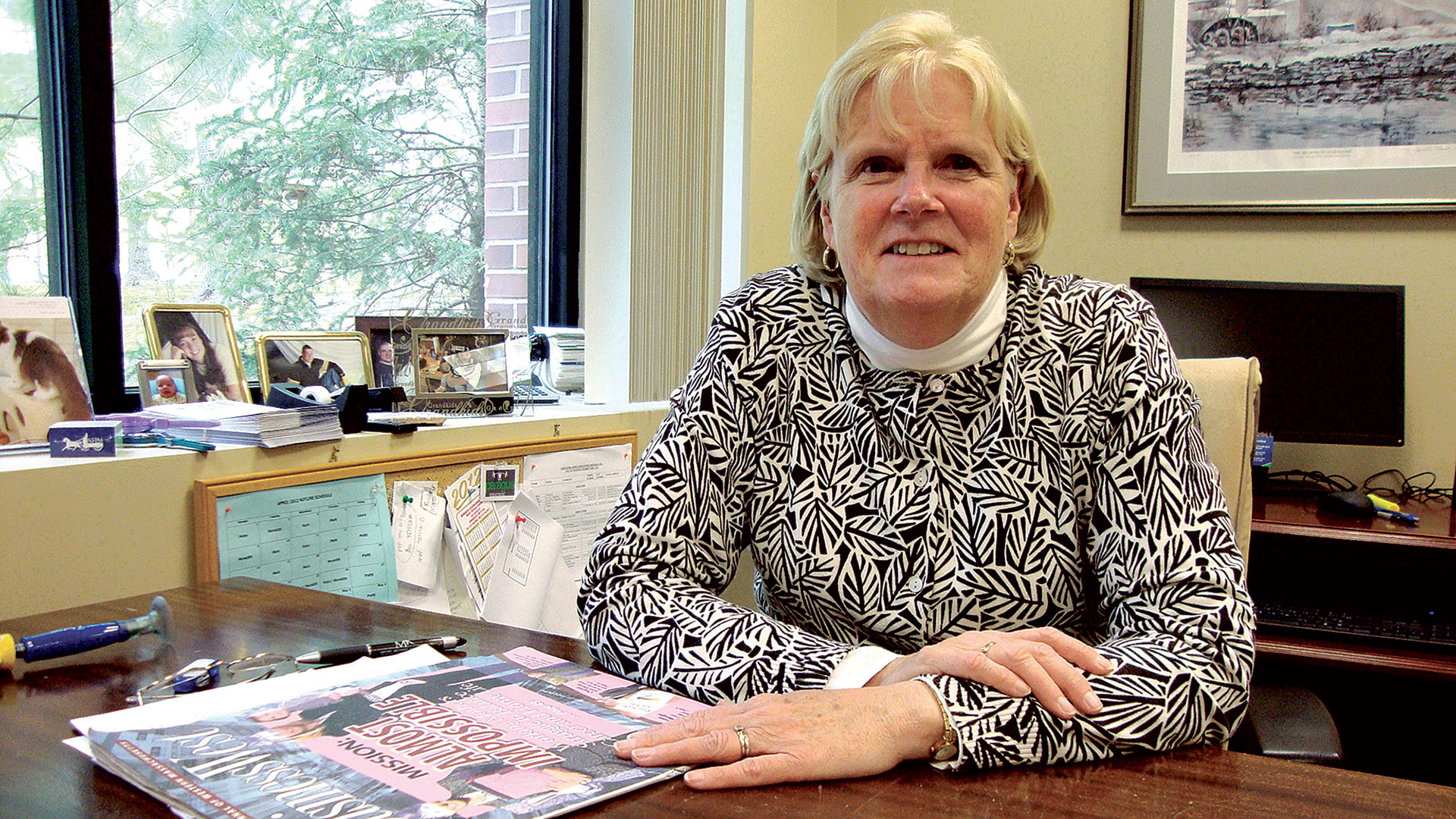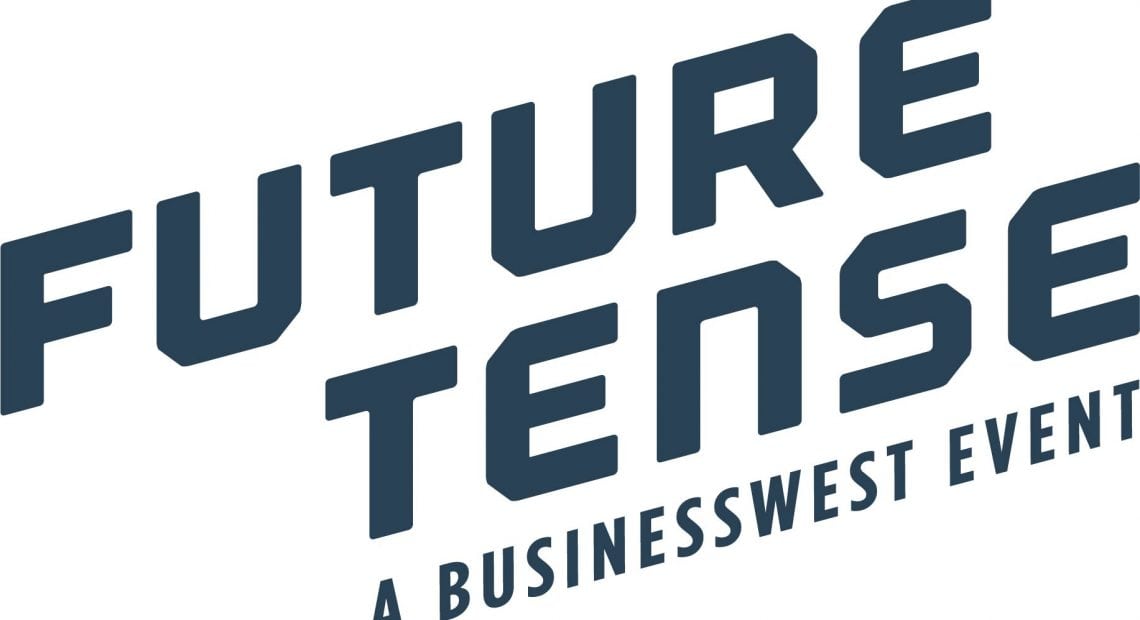Critical Conversations

It’s easy to tell when someone is struggling with asthma, Krista Mazzuca said.
“If I come to work with bad asthma, you see me breathing hard. My supervisor says, ‘hey, Krista, take a minute,’” said Mazzuca, first vice president of Human Resources at PeoplesBank.
But mental distress, she noted, can be tougher to spot.
“It’s important for managers in an organization to understand how mental health impacts their employees. If I’m stressed out, you have to know how to recognize that, too, and say, ‘hey, you look stressed. Maybe take a walk. Maybe take tomorrow off.’”
Shana Hendrikse agrees. As senior advisor at Giombetti Associates, a Wilbraham-based consulting firm that specializes in building high-performance companies, she said employees’ mental wellness is a key factor in that effort, and one more companies are becoming aware of.

Shana Hendrikse
“While it’s gotten better, I don’t think we’re there yet. There’s more conversation and more awareness from businesses. But there’s work to do.”
“Burnout is a real thing, especially after COVID, and there’s been a definite increase in mental-health issues in the workplace,” she told BusinessWest. “We definitely touch on that a lot in our team-building conversations, our one-on-ones with managers and supervisors, making sure they create a safe space and an environment where you feel comfortable sharing what you’re feeling, which ultimately reduces the stigma around mental-health issues.”
At a time when employers across the country, and across all sectors, are still grappling with a workforce crunch that has made talent recruitment and retention more challenging than ever, many businesses say keeping their workers happy is key. And happiness is, very often, tied to mental wellness and stress reduction — hence, a greater willingness by employers to directly talk about it.
“While it’s gotten better, I don’t think we’re there yet,” Hendrikse said. “There’s more conversation and more awareness from businesses. But there’s work to do.”
One key to that work is what Pam Thornton, director of Strategic HR Services at the Employers Assoc. of the NorthEast, calls “empathetic leadership.”
“We’re in this extreme talent crunch, with not enough people to do the work, and people are stressed; they’re leaving the workforce in droves, retiring early, or leaving a full-time job and taking two part-time jobs. There’s so much pressure, and employees have so many choices.”
In such an environment, she went on, “empathetic leadership is the driving force behind retention. It’s about individualized conversations, understanding where people are. ‘Is there too much work?’ ‘Are you happy here?’ ‘Do you have balance?’ Maybe they can’t focus on work because of what happens at home. We might not have all the answers, but we may be able to make all kinds of accommodations. We need to try. At the end of the day, if we don’t make space for the things they’re asking for, we won’t be able to get our work done.”

Pam Thornton
“We might not have all the answers, but we may be able to make all kinds of accommodations. We need to try.”
And that’s the heart of the issue — employee wellness isn’t just good for the employee; it benefits the business, too, and it’s worth investing in for both reasons.
“The stress of the workplace has definitely been exacerbated over the past few years, and that stress is something employers have recognized,” said Joel Doolin, executive vice president of MiraVista Behavioral Health Center in Holyoke and its sister facility in Devens, TaraVista. He added that a positive employee experience is directly tied to a positive business outcome, so employers would do well to be open about mental and emotional wellness at work.
“It starts with the culture of an organization and buy-in from the leadership,” he explained. “Mental health is like any other employee factor. If someone has the flu, you make sure they have days off. Well, if they’re overwhelmed, they should have a mental-health day — a sick day like any other sick day. Ten years ago, talking about that was taboo; you just called in sick and did what you had to do. Now people are more open about it. Employees should still have rules and regulations, but days off for mental health are important.”
Help Is on the Way
Mazzuca cited statistics suggesting one in five people struggle with mental illness, but only about a third of them seek help. And that can be a problem at work.
“It’s a real thing, and I think it’s more present now than it’s ever been,” she said. “If you have anxiety or depression, it’s an invisible disability. But people don’t want to miss work.”
That leads to the phenomenon called ‘presenteeism,’ she noted, which connotes people who come to work but aren’t fully invested because of what else they’re dealing with, affecting both their wellness and the company’s productivity. Mental health can also affect physical health, she added, which makes the situation even worse.
There are resources companies can offer, however. At PeoplesBank, she cited a well-attended class on burnout and resilience, robust mental-health coverage in employee health plans, and free subsciptions to online resources like Calm.com, a meditation and mindfulness app, and Care.com, a resource for finding dependent care.

Joel Doolin
“If someone has the flu, you make sure they have days off. Well, if they’re overwhelmed, they should have a mental-health day — a sick day like any other sick day.”
“The important thing is, we’re trying to promote well-being,” she said, also noting that the bank has invested in its employee-assistance program (EAP). “We’ve done a lot to get people to use our EAP and give them access to mental-health professionals. The EAP is open to not only them, but their family. It’s also important that people know it’s confidential and free of charge.”
Thornton agreed that EAPs are a valuable tool to help employees with issues that company leadership might not be suited to deal with. “It’s confidential, and it provides a resource for them to connect with someone who can help them.”
Doolin noted that, while EAPs have been around for some time, he sees them getting more attention now. In some sectors, they’ve long been a key resource for employees, Hendrikse added.
“I was in banking for 25 years, and the EAP was always a thing in banking. It was part of the onboarding process,” she said, adding that companies should emphasize such resources up front, during onboarding and even recruitment, because they hold value for plenty of people.
“I don’t think a lot of companies stress that enough in terms of onboarding people. It’s important to have these conversations with people: ‘hey, we have these resources for you. If you’re feeling burned out, if something’s going on at home, here are the resources we have for you.’ It sets the tone, knowing that you’re taking a job where you can be vulnerable about what you’re going through. It reduces stigma.”
After all, Hendrikse added, while employees certainly want good pay, a solid benefits package, and paid time off, they also value a culture that recognizes the damaging effects of stress and the need for work-life balance. “It would make me feel like this company cares about me and my well-being. And I think you might get a lot more engagement from employees when they feel valued and safe. I mean, we’re all human.”
That positive engagement means having conversations with employees and building trust between the leadership and workforce, Thornton said. That might involve surveying employees on what they need and — even more critically — following up. That might mean more scheduling flexibility or mental-health days off, or recognizing when there’s just too much on an employee’s plate.
“Hearing nothing, it’s easy to keep going along and assume we’re doing everything right. You have to get feedback,” she said. “When there’s turnover, sometimes you don’t replace a person, and now there’s more on someone else’s plate. That’s a real thing.
“Without good leaders — not just at the top of the business, but good, empathetic leaders throughout the company — you won’t be successful,” she added. “You have to invest in your leaders.”
Support System
Getting back to her initial asthma analogy, Mazzuca said employees need to feel supported at work when they’re grappling with mental-health issues and stress, whether that means being allowed to take a leave of absence without penalty or being encouraged to access other resources without fear of stigma.
“People are more vulnerable to the negative impacts of stress outside the workplace if they don’t have positive relationships at work,” she said, noting that conversations around these issues — followed, again, by real action — benefit everyone. “It increases retention, and it increases productivity. It’s worth investing in helping them be their best self.”
As long as they’re not abusing the privilege and taking time off every week, Doolin said employees should be able to use paid sick time for legitimate mental-health struggles, and be open about it. And employers need to recognize that it’s tougher than ever to escape the stresses of life — at home or at work.
“Today, we have cellphones and laptops. Twenty-five years ago, you went to work and dealt with work, and then you went home and dealt with home. Now, everything follows you wherever you go. I think it’s important to recognize that and talk about how we can mitigate some of that. Maybe put in a no-email-on-vacation policy to make sure people get the rest they need. I’m a fan of technology, but it can also be a hindrance.
“Being a leader in an organization that works with people that have mental-health situations, it’s important for us to recognize the need for flexibility,” he added. “Even as a hospital, we still have situations where people can work from home — not direct-care staff, but we’ve adapted to that flexibility. We recognize that employees and employers are in it together. In order to be successful, to have great employees, we need to be able to pivot and give them what they need.”
Hendrikse said there’s often a gap between what employers think they’re providing and what employees feel like they’re getting when it comes to resources and benefits, and closing that gap often comes down to simply starting conversations.
“It’s about creating a culture where it’s OK to talk about these things,” she said. “You can have trainings and workshops, provide resources like EAPs, bring in experts. But the supervisor can also have these conversations directly with the team. Make it relatable: ‘hey, this is what I struggle with myself.’ When supervisors are more transparent with their own struggles, when they’re being vulnerable, employees will feel safer sharing.”
There has been an uptick in this vulnerability and openness in organizations since COVID, Hendrikse added, but much more common, even now, is a persistent unwillingness to share certain things with the boss.
“It’s seen as a weakness,” she said. “A lot of places are doing better with that, but I think we still have a ways to go.”
“Generally, anti-harassment training is a helpful addition the employer’s tool chest for preventive measures against discrimination and harassment.”



































 It took almost two years, but Massachusetts regulators have finally started to issue licenses to businesses looking to grow, manufacture, distribute, and sell recreational marijuana products in the Commonwealth.
It took almost two years, but Massachusetts regulators have finally started to issue licenses to businesses looking to grow, manufacture, distribute, and sell recreational marijuana products in the Commonwealth.


